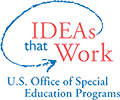Share this Guide
Microteaching-Explicit Instruction
Submitting Authors: Dr. Stephen D. Kroeger and Dr. Kate Doyle from the University of Cincinnati
Definition: Microteaching is a practice-based learning opportunity that can be used at any point in a teacher education program. Microteaching is a system of controlled practices that make focusing on specific teaching behaviors and practicing teaching those behaviors under specific, bounded conditions possible (Benedict, Holdheide, Brownell, & Foley, 2016; Brownell, Benedict, Leko, Peyton, & Pua, 2019). In microteaching activities, teacher candidates take turns playing the role of teacher and P-12 students. During microteaching, candidates have opportunities to discuss and reflect on how they implemented a specific teaching behavior and the impact it had on their peers’ learning. They also have opportunities to receive feedback on their performance from teacher educators. Microteaching has been shown to be an effective PLO for training and assessing teacher candidates (and practicing teachers) on specific teaching practices, particularly when teacher candidates have time to plan, analyze, and revise the instructional behaviors they are learning (Tyminski, Zambak, Drake, & Land, 2014), and when microteaching is followed by practice in an authentic setting.
Description of this activity:
This microteaching Practice-Based Learning Opportunity (PLO) ) develops candidates’ knowledge of explicit instruction and provides guided opportunities to practice using explicit instruction in a simulated environment. Candidates use explicit instruction to teach one to two peers at an instructional reading level appropriate for the students they are simulating. The microteaching process consists of four phases: 1) Planning, 2) Implementation, 3) Reflection and Commentary, and 4) Collaborative Reflection.
This microteaching PLO primarily addresses the second and fourth components of McDonald and colleagues’ (2013) enactment cycle as candidates prepare for and rehearse the activity with peers and engage in reflection/assessment using the video of the lesson. In this description, we discuss how to use the practice with candidates to support them in learning about explicit instruction, but professional development (PD) providers can also use microteaching to support in-service teachers who are initially learning to use explicit instruction.
Context: This PLO occurs early in the preparation program, after candidates have sufficient knowledge related to explicit instruction and lesson planning from previous coursework. The PLO is part of a course on reading instruction, and candidates use the knowledge they have gained about explicit instruction and combine it with what they are learning about planning and implementing instructional reading strategies (e.g., decoding, vocabulary, reciprocal teaching) to plan and implement the microteaching lesson.
Stage 1: Planning Stage
What is this stage about?
In this stage, the instructor develops knowledge of explicit instruction, helps teacher candidates learn how to plan a lesson that incorporates explicit instruction, and helps students learn about the microteaching cycle.
How does the instructor implement this stage?
Step 1: The instructor ensures that candidates understand explicit instruction and its components. The structured video analysis PLO and the simulated interaction PLO provide resources that instructors can use to help candidates acquire knowledge of explicit instruction.
Step 2: The instructor models for candidates how to develop a lesson plan in which explicit instruction is demonstrated and also helps candidates see how to use the reflection and collaborative assessment tools. In this example PLO, lesson planning is taught in a literacy methods class. The edTPA was used as a framework for helping candidates understand what to include in a lesson plan or learning segment. Specifically, candidates are taught to design a series of lessons that address three to five specific objectives. The Kaltura planning video link mentioned in the resource section will be useful.
Step 3: The candidates are taught to establish a baseline of student performance that they will use to inform the lesson objectives. They are also taught how to collect data to establish this baseline.
Optional: If the program does not use a standard template for lesson planning, then the instructor will need to emphasize the common features of a lesson plan. The instructor can use a crosswalk of several plans to identify common implements (e.g., three to five objectives, data collection/baseline, and reference for the strategy/intervention).
*Emphasize common features of lesson plans if a standard template is not required (Emphasize via a crosswalk of multiple plans to identify common elements, including three to five objectives, data collection/baseline, and reference for the strategy/intervention.)
Materials/resources needed to implement
Resource A: Sample lesson plan and video links describing the microteaching process, including models of how to engage in the planning process, establish a baseline of student performance, and complete data collection. The teacher candidate can use other materials to teach the lesson.
Resource B: Blank lesson plan template
Resource E: Syllabus describing the microteaching process
Other references that are useful:
Hattie, J. (2012). Visible learning for teachers: Maximizing impact on learning. Routledge Taylor and Francis Group.
McLeskey, J., Maheady, L., Billingsley, B., Brownell, M. T., & Lewis, T. J. (2018). High leverage practices for inclusive classrooms. Council for Exceptional Children and Routledge.
Questions other faculty/PD providers might have when implementing this stage
1. Does this practice generalize across content areas? This process is appropriate for instruction across various content areas.
2. Where does instruction on lesson planning occur in the course sequence? Lesson planning occurs in the first-semester method course. Lesson planning may vary across programs.
3. How would you navigate differences in expectation between cooperating or mentor teachers and teacher candidates regarding a “culture of planning”? Planning is an essential element of the microteaching process. The expectation to teach from lesson plans can be set as a program requirement.
Stage 2: Implementation Stage
What is this stage about?
In this stage, candidates work collaboratively to teach the lesson. One candidate teaches the planned lesson to small groups of peers, a peer in the group video records the lesson, and the remaining one to two peers act the role of students. The cycle repeats itself until all candidates in the group have taught.
How does the instructor implement this stage?
Step 1: Divide students into groups of three.
Step 2: Have students prepare to teach the planned lesson.
Step 3: Have candidates collaboratively teach the lesson and provide instructions on how peers should play the part of students.
Materials/resources needed to implement
Video recording capacity (e.g., camera, phone, Swivl device)
Resource B: Lesson Planning Template
Questions other faculty/PD providers might have when implementing this stage
How much of the lesson should candidates record? Recordings can range from five to 20 minutes.
If candidates (or in-service teachers) practice microteaching with real k-12 students, how should instructors address consent? The edTPA consent form is available.
Stage 3: Reflective Commentary Stage
What is this stage about?
In this stage, the instructor helps candidates learn to analyze their instruction. Candidates are taught to connect what unfolds in the lesson to theory, research, and/or principles of learning. For example, the teacher candidate might note that he or she prompted peers to make connections to prior learning by asking them to recall something they know about the topic before reading.
How does the instructor implement this stage?
Step 1: The instructor models for candidates how to use the reflective commentary to develop a running record of instructional events and analyze their lesson (see Kaltura link for the reflective commentary). In completing the reflective commentary, the instructor shows candidates how they can connect what unfolds in the lesson to theories of learning and research that they have studied previously.
Step 2: Candidates observe their video-recorded lesson and complete a running record of what occurred in the lesson. The candidates are taught to stop the video every minute and record lesson events and comment (see Step 3).
Step 3: Candidates record meta-cognitive comments in the reflective commentary. These comments focus on the connections candidates make between lesson events and theories of learning and research.
Materials/resources needed to implement
Course content: Candidates are encouraged to use course content to develop reflection commentary
Resource A: Kaltura link of instructors modeling how to complete the reflection commentary
Resource C: Reflection Commentary
Resource E: Syllabus describing the microteaching process
Questions other faculty/PD providers might have when implementing this stage
How should the instructor support candidates or teachers in this process? The instructor should be very specific and intentional in modeling this process. They should shift ownership to the candidates or teachers. Probing questions will help shift ownership and develop the ability to reflect.
How can instructors identify candidates or teachers who might not be as reflective or who struggle with drawing conclusions? Levels of reflectivity may be determined through reviewing the reflective commentary or assessment log. Instructors can provide more probing questions to support candidates or teachers.
Can the reflective commentary be used in other ways? The designers of this PLO have used the reflective dialogue for formative assessment. It has helped them determine when candidates need to learn more about explicit instruction or better understand student learning.
Stage 4: Collaborative Reflection
What is this stage about?
In this stage of microteaching, candidates work through a series of reflective prompts with their peers. This phase is designed to deepen the candidates’ ability to analyze their instruction.
How does the instructor implement this stage?
Step 1: The instructor should ensure that candidates have the prerequisite knowledge they need to complete the collaborative log, to include constructing and/or implementing data collection tools, interpreting data for instructional decision making, defining outcomes for the target lesson, and analyzing data to determine if students (peers in the microteaching activities) achieved outcomes.
Step 2: The candidate teaching the lesson selects a five-to-seven minute segment of the microteaching video.
Step 3: Identify a note-taker who becomes the facilitator of the session so the teacher is free to reflect.
Step 4: Peers review the clip with the teacher and provide in-depth feedback using the collaborative assessment log as a guide for reflection.
Step 5: The candidate teaching the lesson submits his or her reflection log from Part 3 and the collaborative assessment log to the instructor for review and feedback.
Step 6: Establish a follow-up learning goal and activity for the candidate (e.g., improve student engagement during modeling with peer coaching).
Materials/resources needed to implement
Resource A: Kaltura link of instructors modeling how to complete the collaborative assessment log
Resource D: Collaborative Assessment Log
Resource E: Syllabus describing the microteaching process.
Questions other faculty/PD providers might have when implementing this stage
How can this collaborative reflection be used as a formative assessment? Instructors can use comments to identify the insights candidates are developing about student learning. They can also ascertain if candidates are achieving learning goals in subsequent microteaching activities or during other PLOs.
Resources

- Microteaching-Explicit Instruction Outline
- Resource A: Sample Lesson Plan
- Resource B: Lesson Plan Template
- Resource C: Reflection Commentary
- Resource D: Collaborative Assessment Protocol
- Resource E: Syllabus for Microteaching
Definition References
Benedict, A. E., Holdheide, L., Brownell, M. T., & Foley, A. M. (2016). Learning to teach: Practice-based preparation in teacher education. Special issues brief prepared by the Collaboration for Effective Educator Development, Accountability and Reform (CEEDAR) Center and the Center on Great Teachers and Leaders. Retrieved from www.CEEDAR.org
Brownell, M. T., Benedict, A. E., Leko, M. M., Peyton, D., Pua, D., & Richards-Tutor, C. (2019). A continuum of pedagogies for preparing teachers to use high-leverage practices (HLPs). Remedial and Special Education, 40, 338-355. doi: 10.1177/0741932518824990
Dawson, M. R., & Lignugaris/Kraft, B. (2017). Meaningful practice: Generalizing foundation teaching skills from TLE TeachLivE™ to the classroom. Teacher Education and Special Education, 40, 26-50.
Tyminski, A. M., Zambak, V. S., Drake, C., & Land, T. J. (2014). Using representations, decomposition, and approximations of practice to support prospective elementary mathematics teachers practice of organizing discussions. Journal of Mathematics Teacher Education, 17(5), 463-487. doi: 10.1007s1085701392614





